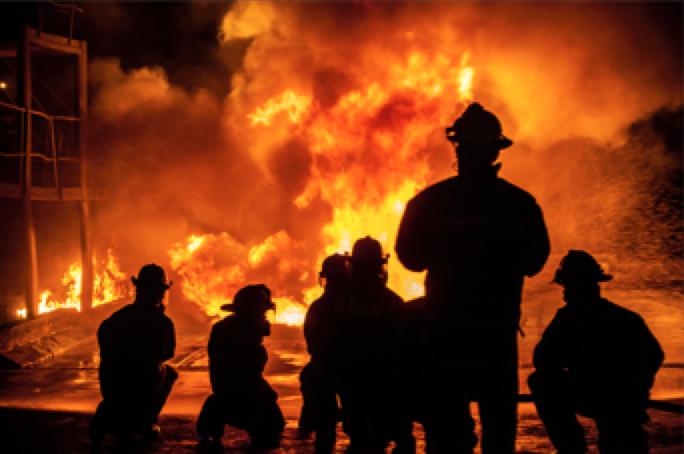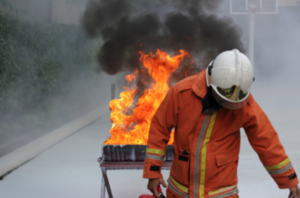15 Feb Heat Stress

If you work in an environment that exposes you to extreme heat, it is important to be aware of heat stress threats and best safety working conditions for dealing with those threats. Working hard in excessive heat can lead to occupational illnesses and injuries such as:
- Heat stroke
- Heat exhaustion
- Cramps
- And rashes
These are serious conditions that can have severe short term and long-term consequences on your health. Therefore, it is very important that your workplace undergoes applicable employee safety training and corporate safety training courses.
Who is Most at Risk?
There are certain professions were employees are at a higher risk of heat stress. Some types of workers most at risk for heat stress include:
- Firefighters
- Bakery workers
- Farmers
- Construction workers
- Miners
- Boiler room workers
- Factory workers
Workers with the following characteristics also have a higher risk of heat stress:
- 65 years of age or older
- Overweight
- Heart disease or high blood pressure
- Take medications that may be affected by extreme heat
Controlling of Heat Stress
Looking to reduce the heat stress in your workplace? Engineering and work practice controls are a good place to start. In order to reduce heat stress via these means you could increase your work environment’s air velocity, utilize reflective or heat-absorbing shields or barriers, and minimize steam leaks, wet floors, and other causes of humidity. Additionally, to further make your workplace less prone to heat stress, you could:
- Limit employees’ time in the heat
- Increase recovery time in cool environments
- Reduce the metabolic demands of the job
- Use tools that minimize the strain of manual labor
- Increase the number of workers per task
- Train supervisors and workers about heat stress
- Implement a buddy system where workers watch each other for warning signs of heat stress
- Require workers to conduct self-monitoring standard operating procedures
- Provide cool, clean water near the work area and encourage workers to drink frequently and stay hydrated
Taking all these suggestions into account, there are four basic key areas to focus on when it comes to protecting your workers from the consequences of heat stress. These include: acclimatization, hydration, rest breaks, and training.
Best Practices for Preventing Heat Stress
 Acclimatization
Acclimatization
It is important to ensure that your workers are properly acclimatized to their hot work environments. To transition them into a state where they are, begin by slowly increasing the time they spend in hot conditions over 7 to 14 days. Employee supervisors should closely monitor their new hires during this time period.
In terms of scheduling, for new workers, the first shift should be 20% of what is expected for the typical work time spent in the heat with no more than a 20% increase on each proceeding day. For workers with previous experience in hot environments, the first shift schedule should be no more than 50% of the usual duration of work done in the heat on day one, 60% on day two, 80% on day three, and 100% on day four.
Hydration
Workers should drink an appropriate amount and stay hydrated at all times. Employers should encourage employees to drink plenty of water, drink hydrating sports drinks with electrolytes if employees are sweating for a prolonged period of time, and stay away from alcohol and caffeinated beverages. In addition, be weary of over hydration. When people exceed more than six cups of liquid in one hour, they are at risk for this.
Rest Breaks
Employers need to make sure that employees take appropriate rest breaks to cool down and hydrate. Some ways to do that are by maintaining a work policy that allows rest and water breaks when an employee feels heat discomfort, and modifying work/rest periods to give the body a chance to get rid of excess heat. Furthermore, it is very important to shorten work periods and increase rest periods when:
- Temperature, humidity, and sunshine increase
- Protective clothing or equipment is being worn
- There is no air movement
- Heavier work is being done
Training
 If you have a business that exposes workers to heat stress, it is crucial that you take the proper safety precautions to protect your employees.
If you have a business that exposes workers to heat stress, it is crucial that you take the proper safety precautions to protect your employees.
One of the best things you can do is enlist the services of a corporate safety training course and/or an employee safety training course to help employers and their workers understand what heat stress is, how it affects health and safety, and how it can be prevented.
We cannot overstress the importance of employees being trained on the potential dangers of heat stress, as well as the best preventative measures for ensuring their safety, before starting work in an environment with heat stress potential. Some important aspects of heat stress covered in an employee safety training or corporate safety training course would be:
- Recognition of the signs and symptoms of heat stress illnesses
- Administration of first aid
- Causes of heat stress illnesses and the procedures that will minimize the risk
- Proper care and use of heat-protective clothing
- Factors that increase your risk to heat stress
- The importance of acclimatization and hydration
- Procedures for responding to symptoms of possible heat stress illnesses
Make Sure Your Workers are Safe
Creation World Safety provides the necessary corporate safety training courses and employee safety training courses to help workers prepare for and be protected from heat stress. To learn more about heat stress, and all courses offered at Creation World Safety, call us today. Located in Torrance, CA, we are your trusted resource for all your safety course and safety certification needs!



No Comments